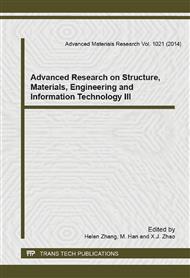p.46
p.52
p.56
p.63
p.68
p.73
p.79
p.83
p.87
Special Strength Curve of Ultrasonic-Rebound Combined Method for Concrete of Oujiang River Bridge
Abstract:
In order to develop the non-destructive test technology of concrete strength for Oujiang River Bridge, a series of experiments were carried out to investigate the influences of mixing quantities and mixing ways (single-mixed and double-mixed) of fly ash and ground slag on the relationship of concrete rebound values and represent value of ultrasonic velocity with compressive strength. Then, the special strength curves of ultrasonic-rebound combined method for concrete of Oujiang River Bridge were established based on the test results with ZC3-A rebound instrument and H450 rebound instrument, respectively. The experimental results indicate that mixing quantities and mixing ways of fly ash and ground slag have no influences on the relationship of concrete rebound values and represent value of ultrasonic velocity with compressive strength when the content of fly ash is less than 35% and the content of ground slag is less than 50%. The strength curve equation of ultrasonic-rebound combined method with ZC3-A rebound instrument can be used to carry out non-destructive test to the concrete under C80. Therefore, it is unnecessary to establish the special strength curves of ultrasonic-rebound combined method with H450 rebound instrument.
Info:
Periodical:
Pages:
68-72
Citation:
Online since:
August 2014
Authors:
Price:
Сopyright:
© 2014 Trans Tech Publications Ltd. All Rights Reserved
Share:
Citation:


